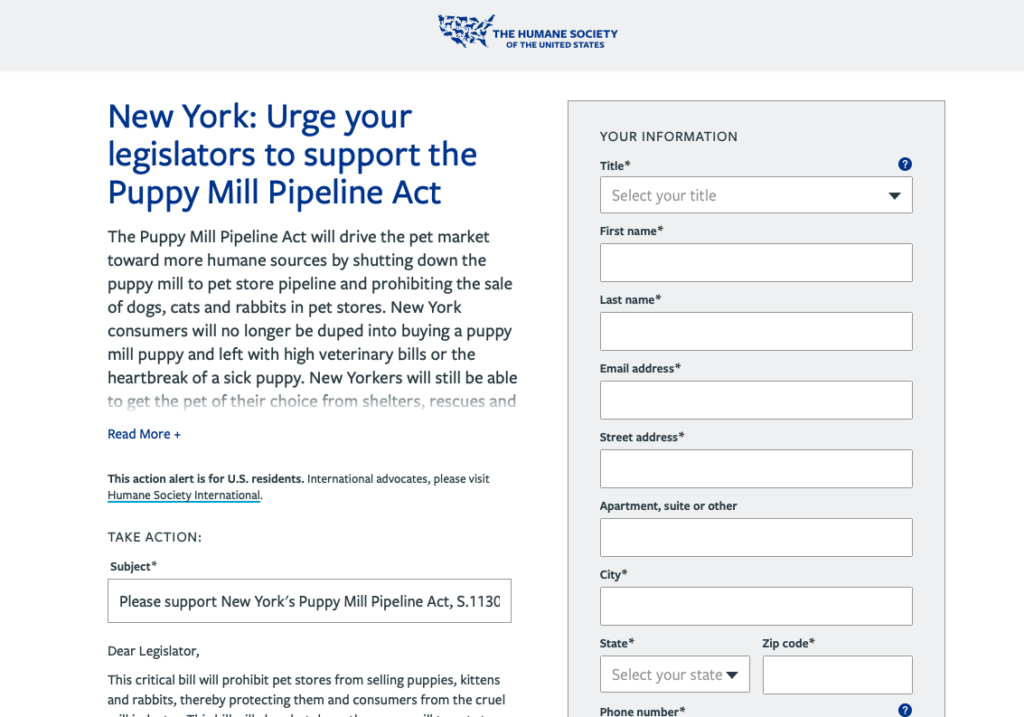
If you’re like me and want to help animals anywhere and everywhere but can’t volunteer, keep reading. I’ve gathered my favorite ways to help animals worldwide so you can do your part, Pandemic or not.
In late February of last year, application in hand, I was ready to begin volunteering at my local animal shelter. I handed in my application, was approved and was excited to help with nurse kittens back to health, get smothered by cats and walk excited dogs. Then, enter the Pandemic.
My dream of volunteering suddenly came to a halt and I was sent home to work remote at my then-job for the foreseeable future. But that’s where the ideas began. See, I had to get creative since I couldn’t help out the way I planned. Here’s what I did and what you can do to help animals from home.

Donate + Purchase Wishlist Items.
This is the easiest thing you can do from home.
What this is: Most SPCAs, animal non-profits and sanctuaries all over the world have “wishlist items.” These are items they always need and use rapidly. Things like cat litter, puppy pads, pet food and bedding are all prime examples and can be purchased online. For example, I just purchased a pet carrier on Amazon and had it shipped to an animal shelter. I called to let them know I was donating it and gave a tracking number. Every non-profit is grateful for any donated or gifted item you can bare.
Why I love this idea: You can donate money and buy items from home right from your couch. As someone who worked for non-profits, donating items or money is the number one way to help them out. Non-profits never get as much funding as you think, and are always trying to do the most they can on a small budget.
Join a Board.
The first thing I did was join the local SPCA’s (the one I was about to volunteer at) Board of Directors.
What this is: A Board of Directors serve as key decision makers for a non-profit. From spending, to staff, to funding, all is done with the help of Board members. They handle a lot of long term goals and plans. Now, depending on where you live and the non-profit shelter you have in your area, it may be invitation only. Sometimes another board member will have to invite you. Either way, you’ll need to first get in touch with someone at the non-profit. Say you are interested and you’ll need to fill out an application which gets approved by the standing members. Also, there’s usually a small donation that’s mandatory (like $100 for the year). This amount changes based on the location and size of the non-profit, some are higher if the shelter is in a city.
Why I love this idea: Once I was on the board I became aware of SO MANY things going on in my city that I was not aware of. Animal cruelty cases, hoarding situations, people dumping pets at the shelter, and the many programs SPCAs actually offer. Not being able to volunteer, I can still make decisions that impact hundreds of animals and am able to donate and help out as much as I could. Plus, all of our meetings are on ZOOM, so being a board member is completely remote. I am very excited for non-ZOOM meetings, but taking care of animals from home is pretty great.
Foster an Animal.
For a more hand-ons approach, fostering is the best way to save animals.
What this is: I’m more or less talking about cats and dogs here, although you can definitely foster pigs, cows and horses. Relating to animal shelters again, fostering should be at the top, too. As helpful as monetary gifts are to animals residing at the shelter, relieving them of animals is a close second. After all, they can’t help more animals unless they have space. To make space they adopt their animals out or foster. Fostering is temporarily sending an animal into an off-site home to free up shelter space.

Fostering is much like adopting except YOU care for the animal to then get adopted by another. Sometimes foster fails happen, as I’ll talk about in another post soon, but the goal is to have another qualified and caring family adopt the animal. Usually the shelter will pay for all expenses related to the animal so your primary job is care, exercise and a proper shelter.
Why I love this idea: Fostering can be great for people who want to do more than just donate money. Fostering is the only way some shelters can even take more animals. Sometimes fosters take care of kittens or injured/sick animals that would normally be euthanized. If you don’t know about Kitten Lady, she is a prime example of how fostering works and how successful it save lives. I recently took in a small guinea pig named Charlie who was pulled from poor living conditions in a home. I care for him day in and day out like my other guinea pigs and any food can be paid for by the shelter, but I chose to just sponsor him in full.
Sign Petitions.
A no-brainer, signing petitions for change you believe in is pretty powerful.
What this is: Petitions are pretty straightforward, but signing them, contacting your local officials about animal issues or welfare, and sharing petitions are a small way to make change happen. Typically these petitions are for animal rights, factory farm issues/regulations, or justice for an abused animal. Below is one I signed from The Humane Society about puppy mills.
Why I love this idea: There’s no monetary investment, just your time to help make change and help animals from home.

Shop Ethically.
Shopping ethically can be a range of things but every piece helps animals in a big way.
What this means: Veganism, if that’s something you’re curious about, is the best way to help all animals. In itself, you’re eliminating animal products from your life and reducing the need globally. I get it though, becoming vegan is not for everyone and is a complete life change. However, vegetarianism, more meatless meals, limiting dairy and finding products that do not test on animals is a great way reduce animal products too. The ASPCA website is a really amazing guide in just introducing you to a more ethical way of life.

Why I love this: I won’t burden you with my vegetarianism story, but finding out how to ethically shop and learning what was in my food was mind blowing. It wasn’t complicated for me, I basically wanted to know how my food and shampoo were made and I wasn’t happy with the answer. After some research, I changed the products I bought and what I ate.
Speaking of shopping, you can use smile.amazon.com when you shop, too – everything you buy donates a small amount to any shelter or non-profit of your choosing. I personally have my Smile account donate to Hedgehog Welfare Society, a non-profit that is very important to me. Using Smile doesn’t donate much but it involves no effort at all on your part. Plus I was probably going to buy that massage chair anyway, so why not give a charity some money too? You can also buy merch from non-profits like Save a Fox (I just got a hat!).
Have more suggestions? I would love to see them! Leave a comment below.


